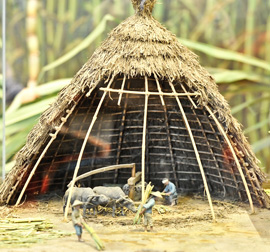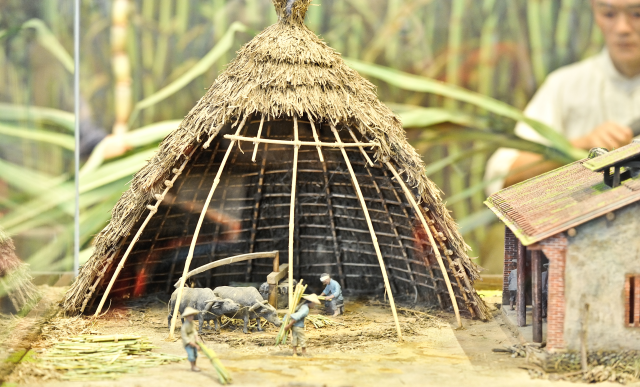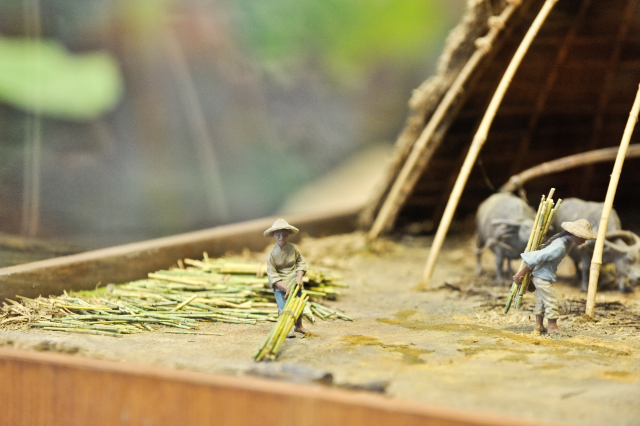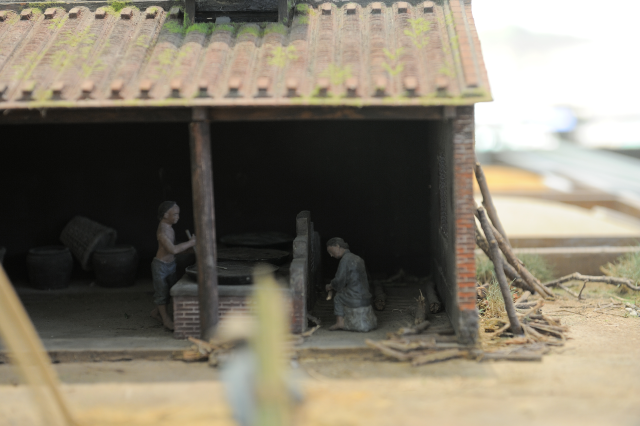:::
Sugar Mill
In the traditional manufacturing of sugar, farmers set up sugar mills near the cane fields for initial processing. They then sold the raw sugar to sugar factories, where it was refined into white sugar. Cane sugar produced during the Qing Dynasty can be divided into four types, including green sugar (or brown sugar), raw sugar, white sugar and crystal sugar. Green sugar is raw brown sugar, and raw sugar is the ingredient used to make white sugar, while crystal sugar is refined from white sugar.
The process of making raw sugar in a mill has three steps: harvesting the cane, extracting cane juice, and boiling it. In the first step, workers harvested the cane, removing dry leaves and green sprouts near the bottom with cane knives. They then tied the sugar canes together and took them to the mill by oxcart or hand. When the cane reached the mill, ox drivers and mill workers took over. The ox driver beat the ox to make it turn the cart, while the mill workers put the sugar cane into the mill to squeeze out the juice, which flowed along a trough into a wooden tank. The juice would then be delivered to the boiling room, where the sugar chef and fire tenders boiled it. In the process of boiling, the impurities floating on the surface had to be removed immediately, and lime was added to the juice to neutralize its acidity. After purification, condensation and cooling, the syrup crystallized into raw sugar.
During the early Qing Dynasty, the price of sugar rose so dramatically that the authorities feared sugar cane fields would expand too much, causing a reduction in food-producing farmlands, and resulting in food shortages and social unrest. They thus implemented policies to limit the growing of sugar cane and encourage the planting of rice. Even so, cane sugar still remained an important export product, even until the 19th century, when the Japanese took control of Taiwan.













